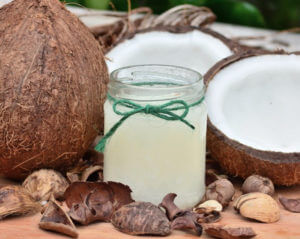Conscious Eating: What Our Bodies Are Trying to Tell Us

When our stomachs growl, we eat. When we feel like we’re about to burst, we stop eating. These are just two examples of our bodies’ incredible ability to recognize and adjust to changes within our environment and ourselves. Sometimes our bodies even know what’s best for us before we do.
The following is an excerpt from Nourishment by Fred Provenza. It has been adapted for the web.
Our bodies translate biochemical and physiological interactions among cells and primary and secondary compounds into sensations through molecules of emotion. Palatability mediated by metabolic feedbacks is a continuum from dislike (mix of foods deficient relative to needs) to like (mix of foods adequate to meet needs) to dislike (mix of foods excessive relative to needs).
A body craves what it needs and the greater the need, the greater the craving.
As Mowat wrote, “I was greedy for it.” However, a body becomes averse to an excess of what it doesn’t need, and the greater the excess, the greater the aversion: “The thought of tepid lard nauseates me now.”
Hunger is my experience of the needs of cells and organ systems for primary and secondary compounds. Satiety and malaise are my experiences of the benefits and costs, respectively, of mixing primary and secondary compounds in various combinations in the meals I eat. Ingesting appropriate blends of primary and secondary compounds results in benefits, experienced as satiety and a liking for the flavors of the foods. Ingesting excess primary or secondary compounds imposes physiological costs, experienced as malaise and a dislike for the flavors of the foods. These responses change as cells and organ systems in my body gently guide my choices to meet their collective needs.
Eating Mindfully
If we are attentive, we can become aware of the relationship between the palate and feedback from the body. That’s the point made by Mireille Guiliano in French Women Don’t Get Fat and by Charles Eisenstein in The Yoga of Eating. They discuss the importance of simply becoming aware of the signals that emanate from the body through to the palate.
As one example, Eisenstein reviews evidence for the importance of fat in our bodies and the lack of scientific evidence that fat and cholesterol cause atherosclerosis. As he then writes, from the point of view of the yoga of eating (the wisdom body), all of that is a moot point. The body—not nutrition scientists and medical doctors—is the final authority in our food choices.
 Eisenstein describes an experience eating coconut oil. “I’d read that contrary to conventional views,” he writes, “coconut oil is very healthful for its plethora of medium-chain fatty acids. I purchased some high-quality coconut oil to try it out, and sure enough, my body responded gratefully— at first. Yet before long, eating moderate quantities every day, the very thought of the stuff disgusted me. My body was telling me I’d had enough. I’ve experienced the same repugnance when I’ve eaten large quantities of other fats, too, particularly nuts.”
Eisenstein describes an experience eating coconut oil. “I’d read that contrary to conventional views,” he writes, “coconut oil is very healthful for its plethora of medium-chain fatty acids. I purchased some high-quality coconut oil to try it out, and sure enough, my body responded gratefully— at first. Yet before long, eating moderate quantities every day, the very thought of the stuff disgusted me. My body was telling me I’d had enough. I’ve experienced the same repugnance when I’ve eaten large quantities of other fats, too, particularly nuts.”
Eisenstein’s experience is consistent with studies that show that eating mindfully—consuming food in response to physical cues of hunger and fullness—is as effective as adhering to nutrition-based guidelines in reducing blood sugar levels and weight in adults with type 2 diabetes. In one study of the effectiveness of these two interventions—which were titled Smart Choices and Mindful Meditation—participants lost the same amount of weight.
The Smart Choices treatment group followed an established diabetes self-management education program with a strong emphasis on nutrition information. The Mindful Meditation group was trained in mindful meditation and a mindful approach to food selection and eating. Both interventions, which involved weekly group meetings, also recommended physical activity.
The Smart Choices program focused on factors that lead to complications with diabetes, including heart disease, kidney and nerve damage, eye problems and stroke, the importance of blood sugar control, and appropriate food choices when blood sugar levels spike. Every session had a discussion on topics such as calorie-intake goals, percent of fats and carbohydrates in an ideal diet, and portion control. Sessions included a fifteen- to twenty-minute walk to further emphasize the recommendation for physical activity. The program also focused on problem-solving regarding choosing healthy foods in high-risk situations, such as the holidays.
In contrast, trainers in the mindfulness program encouraged participants to cultivate inner wisdom, or mindful awareness of eating, and outer wisdom, which is personal knowledge of optimal nutrition choices for people with diabetes. The training encouraged people to be aware, stay in the moment, and live and eat in response to hunger instead of habits and unconscious eating. Each session included guided meditation oriented toward people’s experiences and emotions associated with food.
Participants received CDs to help with home meditation practice. They were encouraged to tune out the many environmental cues that cause us to overeat and tune into our normal physiological signals to eat. Being mindful means stopping long enough to become aware of these physiological cues. The mindful intervention also included information about the relationships among calories consumed, carbohydrate and fat intake, weight regulation, and high blood sugar.
Overall, the participants in both programs lowered their long-term blood sugar levels significantly and lost an average of 3.5 to 6 pounds after three months. 
Being mindful of their body’s nutritional wisdom may be why French women aren’t obese, despite all the energy-rich appetizers, main courses, and delectable dessert pastries they eat. They know when to stop eating. They pay attention to internal cues, such as whether they feel full, and they are also mindful of external cues, such as portion sizes, proximity to food, and social settings, which can lead us to overeat. We are mostly unaware of our eating habits.
We can cultivate mindfulness by eating a variety of wholesome food and being aware of the sensations, including the changes in liking for the flavors of those foods, we experience during a meal. I find the wholesome foods I eat taste much better and I am more aware of feedback from my body regarding my needs when I eat less food and when I eat many foods in moderation.
My food choices range from the meat of wild and domesticated animals and full-fat dairy products to vegetables, fruits, nuts, and small amounts of foods made from some refined carbohydrates. The feedback from my body is also clearer when I avoid fortified, enriched, and processed foods and nutrient supplements. I also believe that enriching, fortifying, and processing foods, along with winning “expert” endorsement for supplements, are stealthy ways food and supplement companies encourage overconsumption to benefit their bottom line.
My point isn’t to recommend that you follow my choices of what to eat and not eat. The point is I’ve taken the time to figure out what works for me. That may or may not be what works for you.
Research studies and clinical practice have both shown that the best way to improve your ability to stick to a diet and lose weight is to review a broad spectrum of diet options designed to best match your food preferences, lifestyle, and disease-risk profile.
Recommended Reads
The Science Behind Food Preferences: More Than a Matter of Taste
Recent Articles
You know of Dasher, Dancer, Prancer & Vixen. Comet, Cupid, Donner & Blitzen. Rudolph too! But have you heard of the Sámi people who herd reindeer in Norway?
Read MoreDitch boring snacks and upgrade to adorable fruit & veggie treats you’ll love! Brighten up snack time this winter using fruits and veggies we all know and love. Can you resist taking a bite of these cuties?
Read MoreWintergreen is the stunning evergreen groundcover that’s a game-changer for your garden! It’s cherished for its aromatic leaves, vibrant fall color & bright berries.
Read MoreThe fig tree is more than just a fruit-bearing wonder. The complex nature of these trees is beyond fascinating. They are the ultimate ecosystem superheroes!
Read MoreThe dirty truth? Soil isn’t just dirt! It’s a complex web of life. Discover the secrets to unlocking its full potential and transform your garden forever.
Read More










